Sugarcane Bagasse: C/N Ratio Effects on Anaerobic Digestion
VerifiedAdded on 2023/06/07
|17
|1021
|241
Presentation
AI Summary
This presentation investigates the effect of varying carbon to nitrogen (C/N) ratios on the anaerobic digestion of sugarcane bagasse, both untreated and pre-treated, to optimize biogas production. The study aims to determine the ideal C/N ratio for maximizing methane yield using biomethane potential (BMP) tests. The methodology involves batch experiments at 37°C with C/N ratios ranging from 15:1 to 40:1, adjusting nitrogen levels with urea and using mesophilically digested sludge as inoculum. Results indicate that for untreated bagasse, a C/N ratio of 35:1 yields a 9.3% increase in methane production compared to the control, while pre-treated bagasse shows a 3.3% increase at a C/N ratio of 25:1. The presentation concludes with recommendations for co-digestion with nitrogen-rich sources and further research using lab-scale reactors to explore additional parameters and pre-treatment methods.
1 out of 17
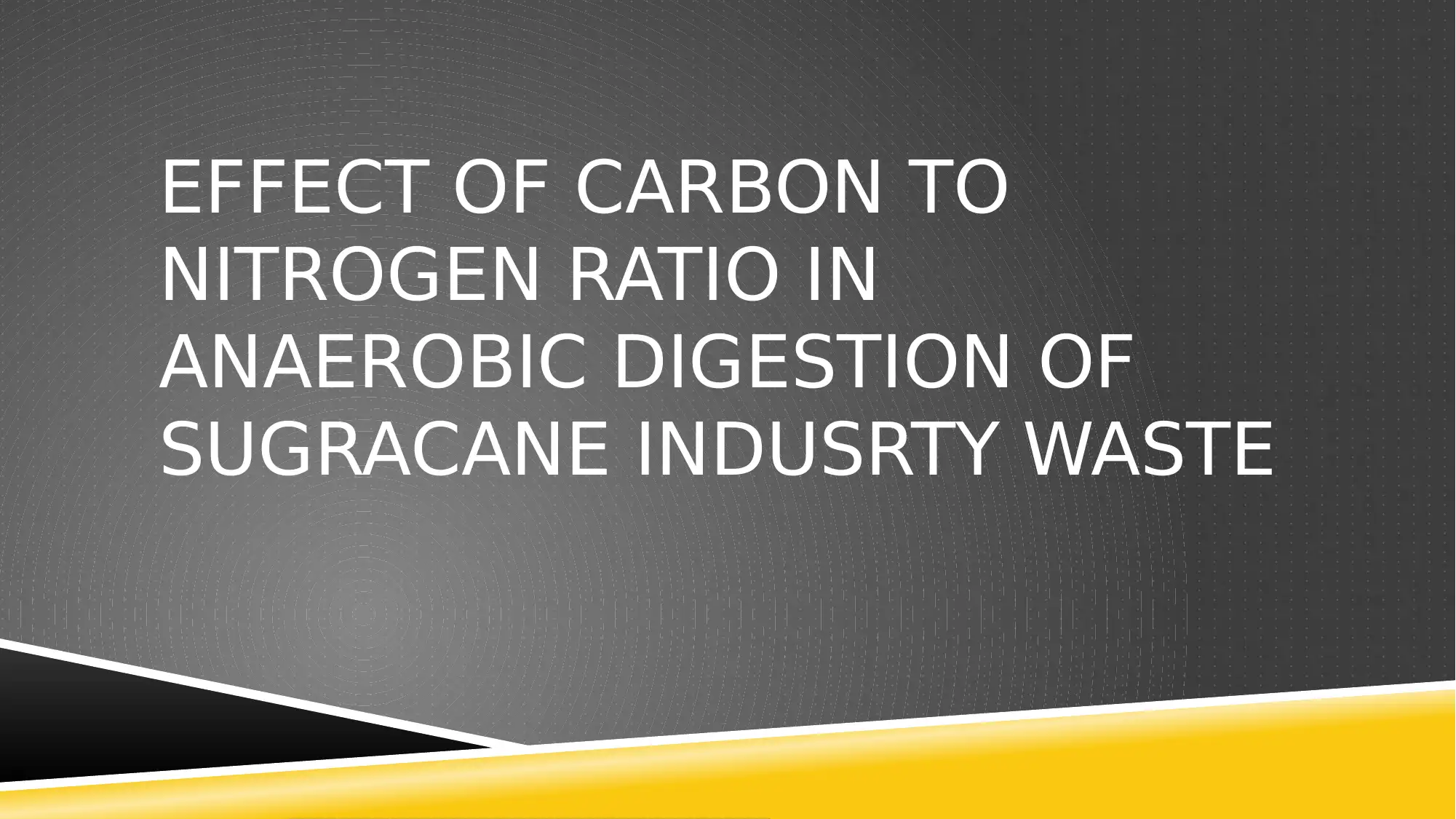

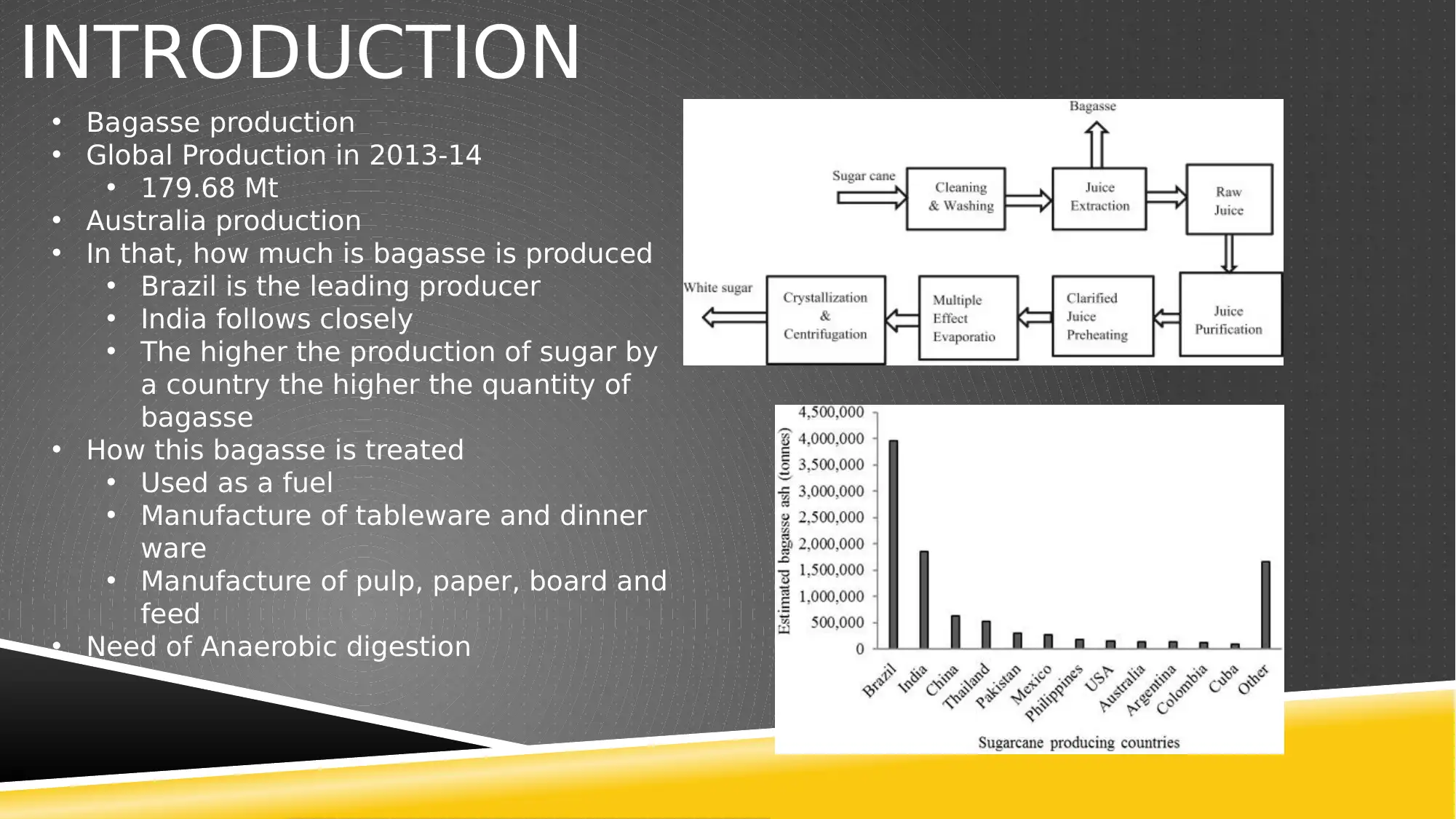

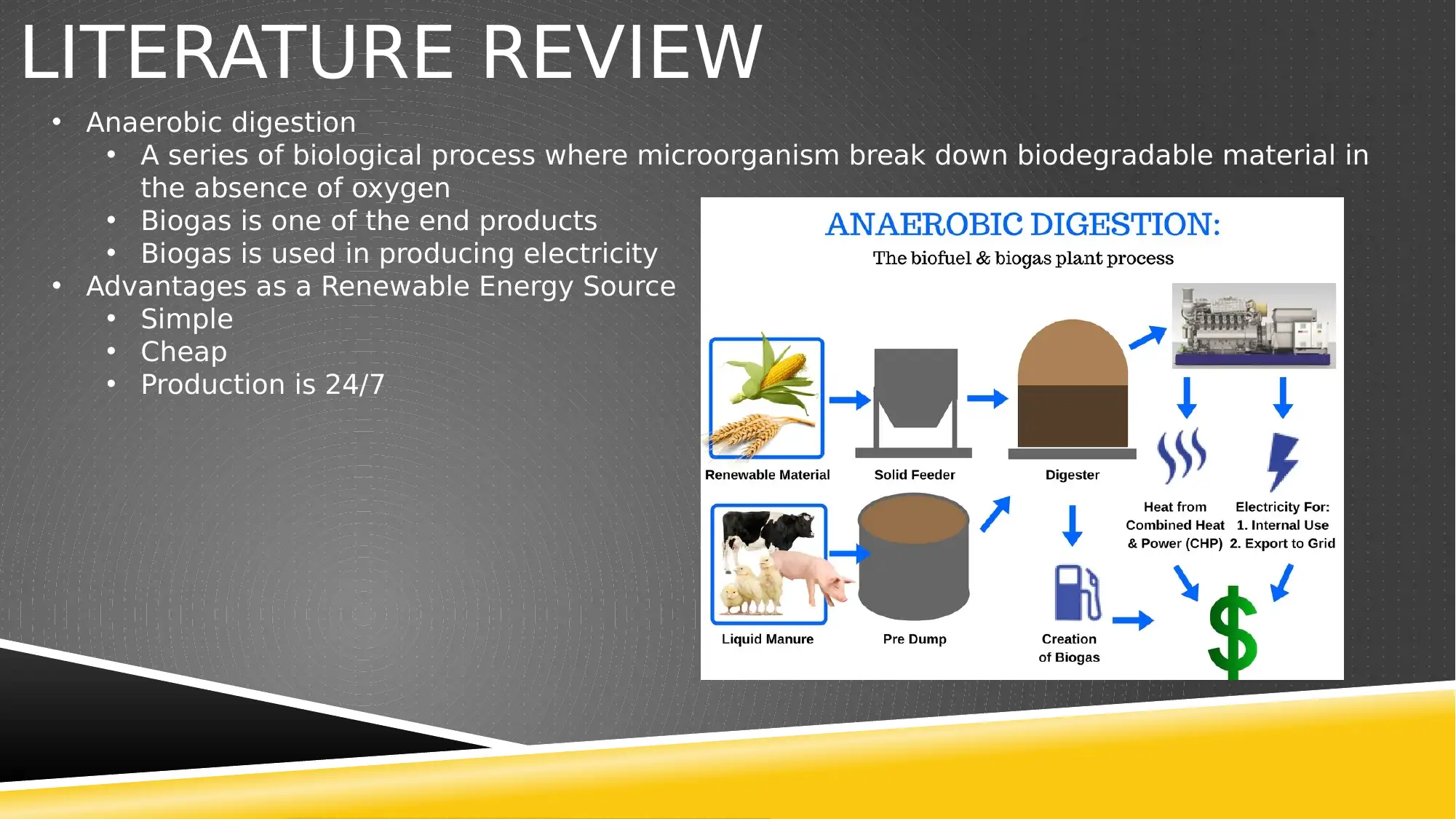
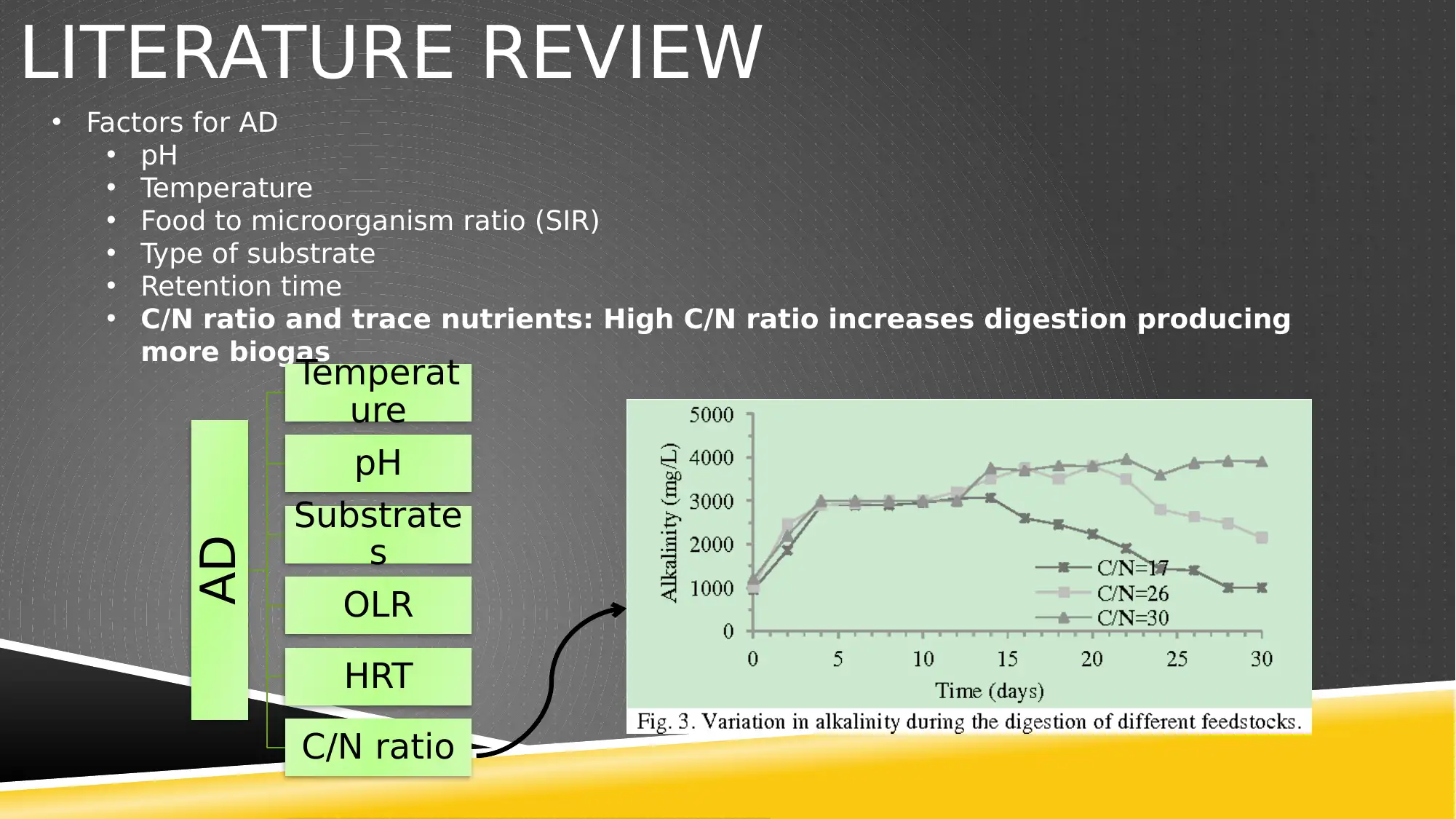
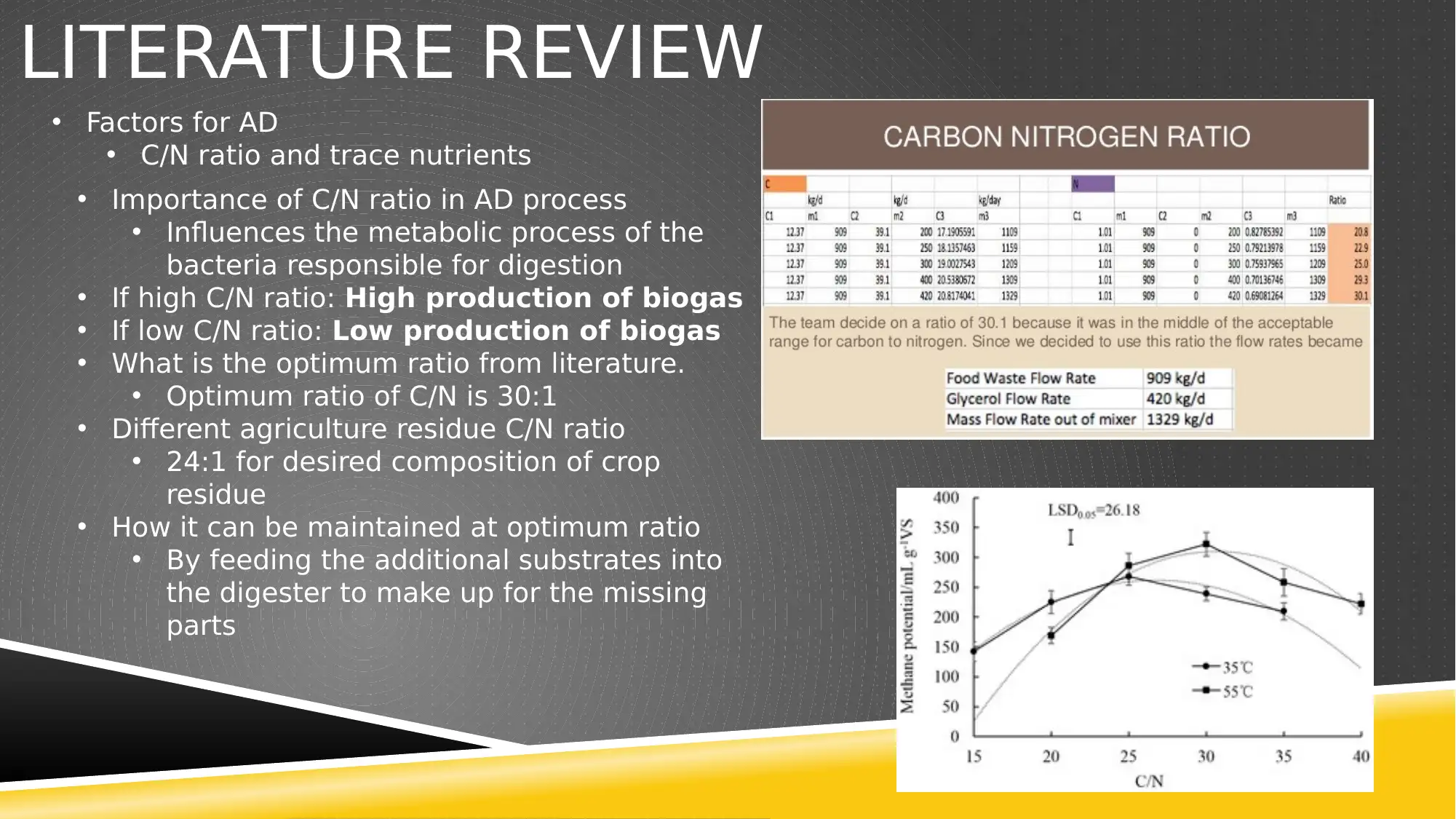
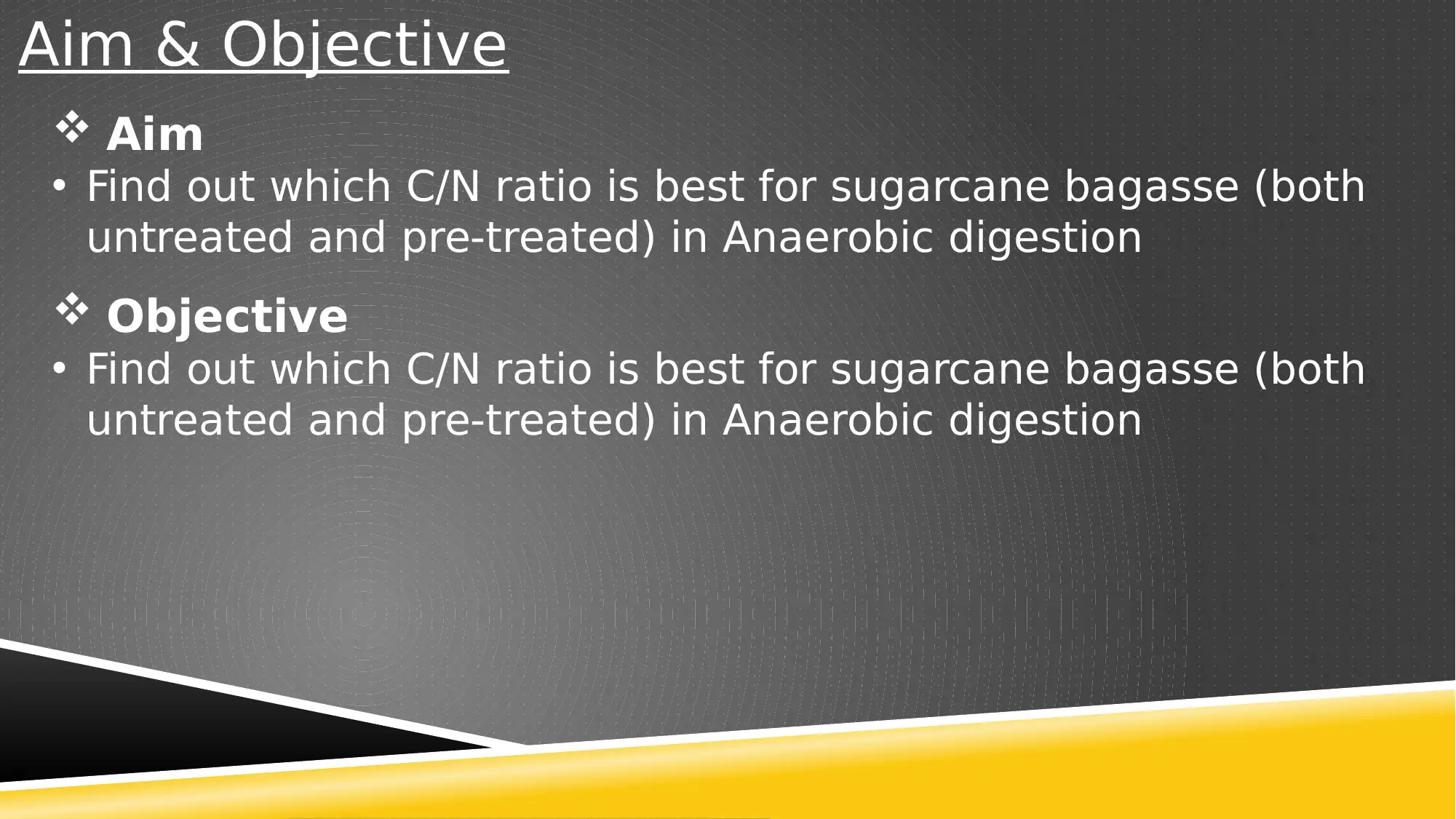
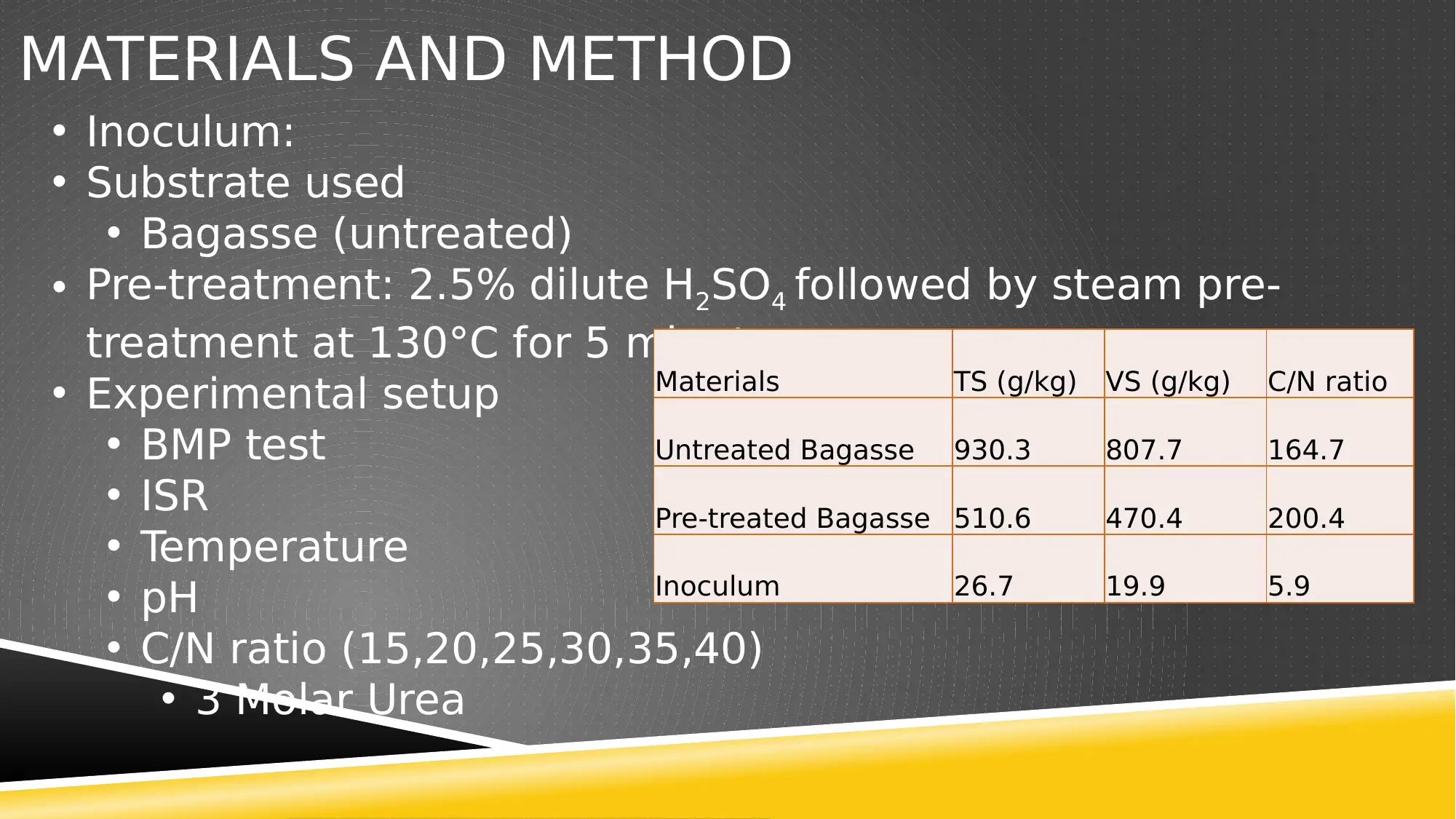
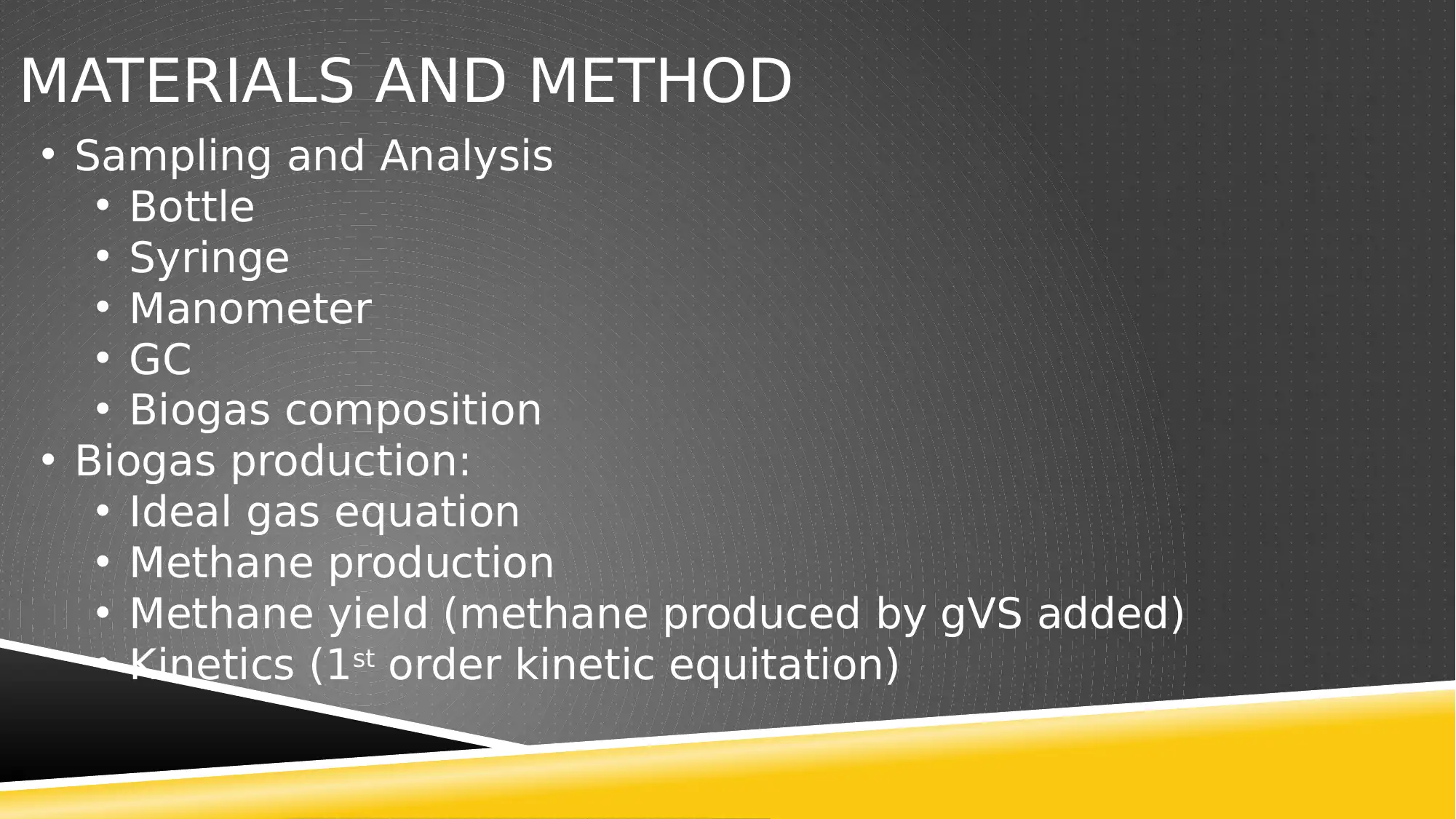
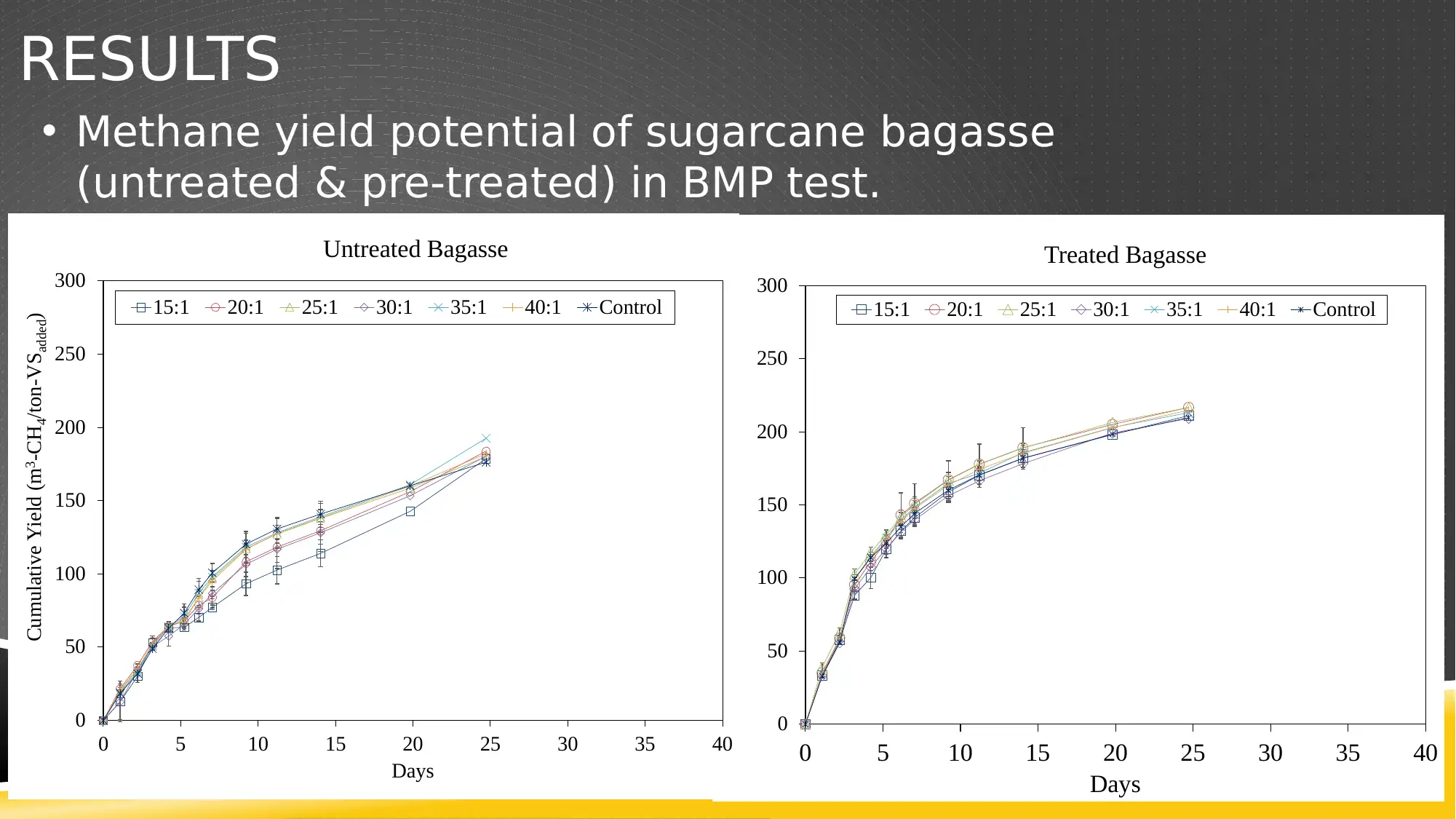
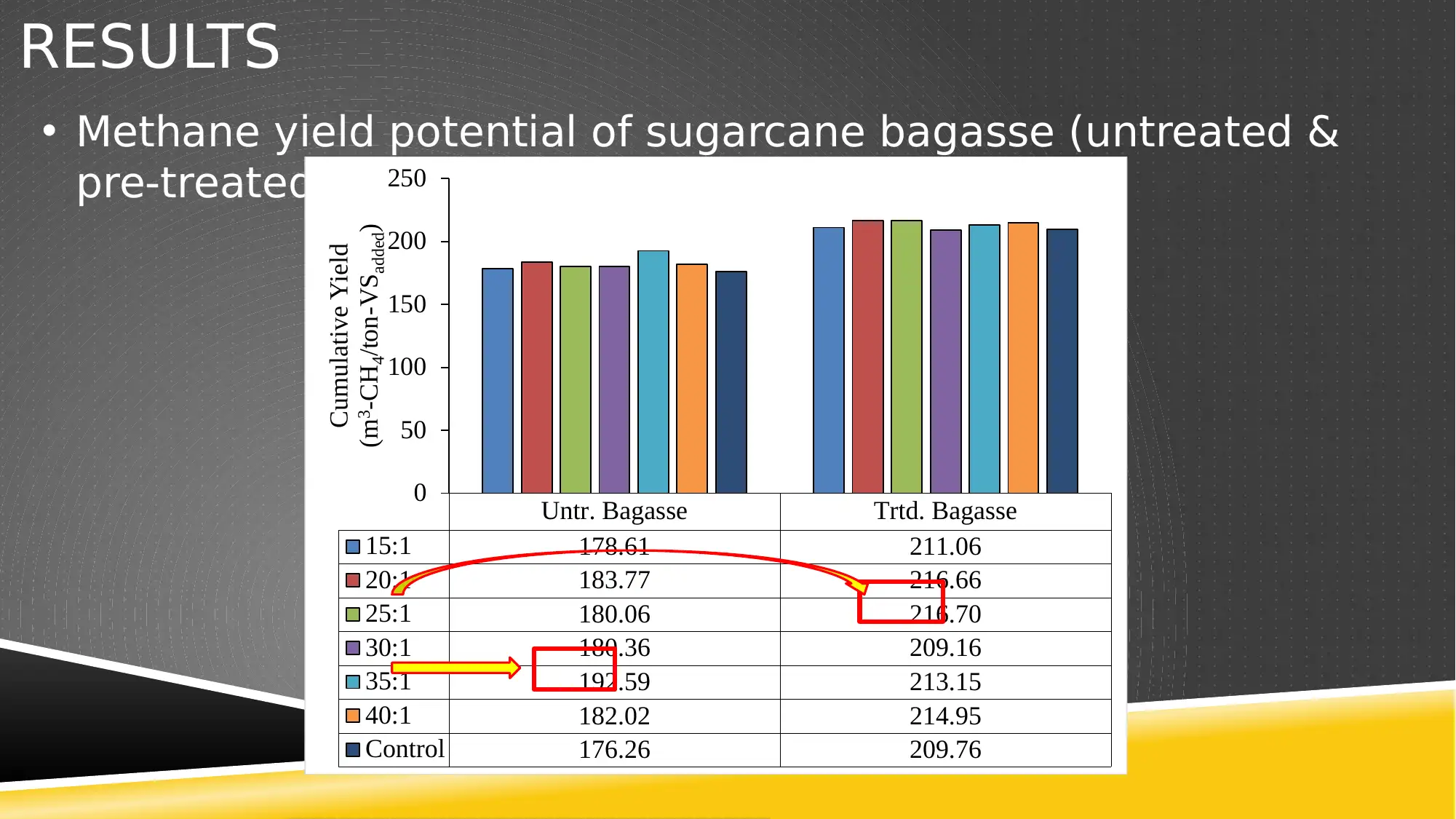
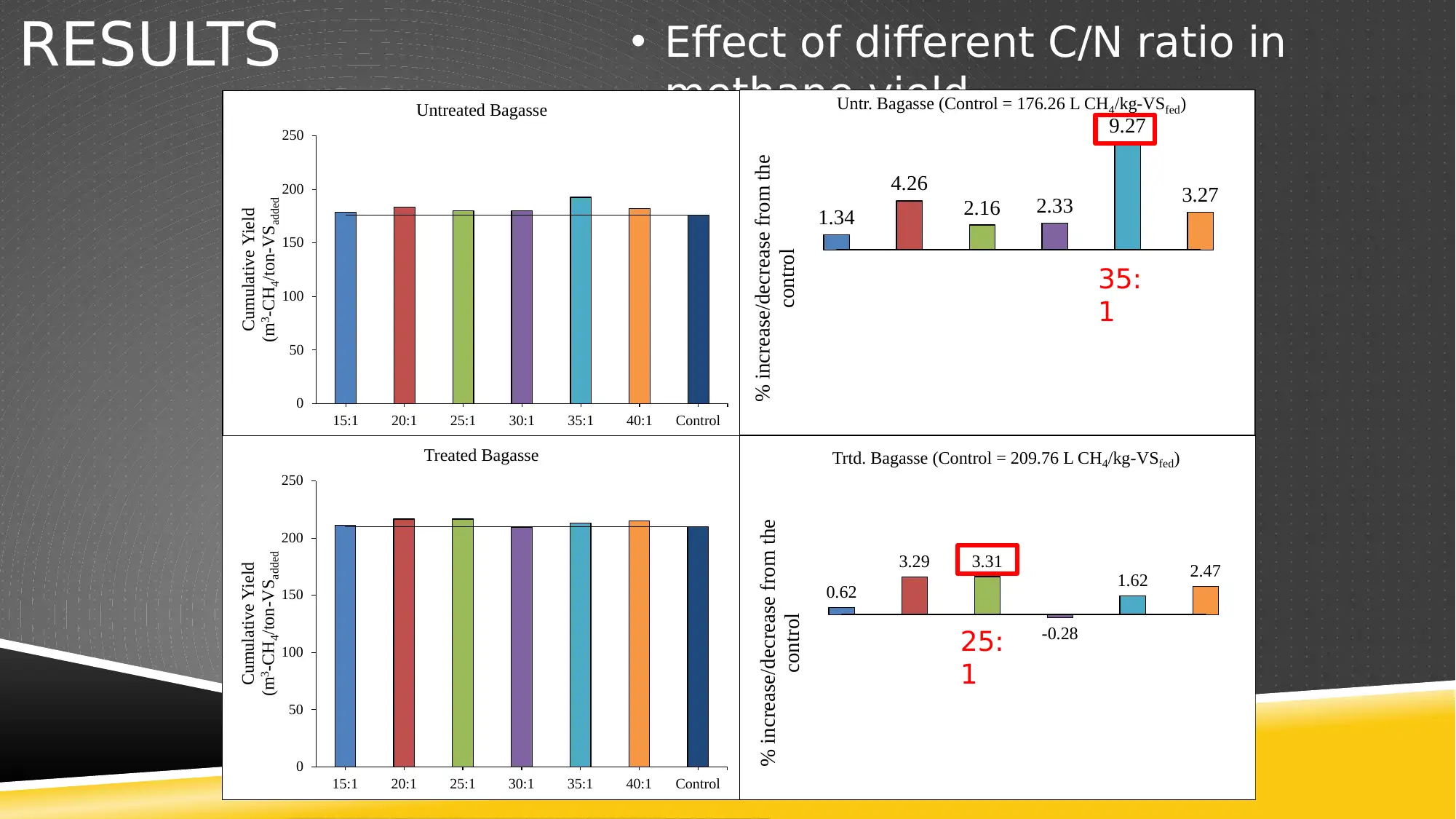


![[object Object]](/_next/static/media/star-bottom.7253800d.svg)